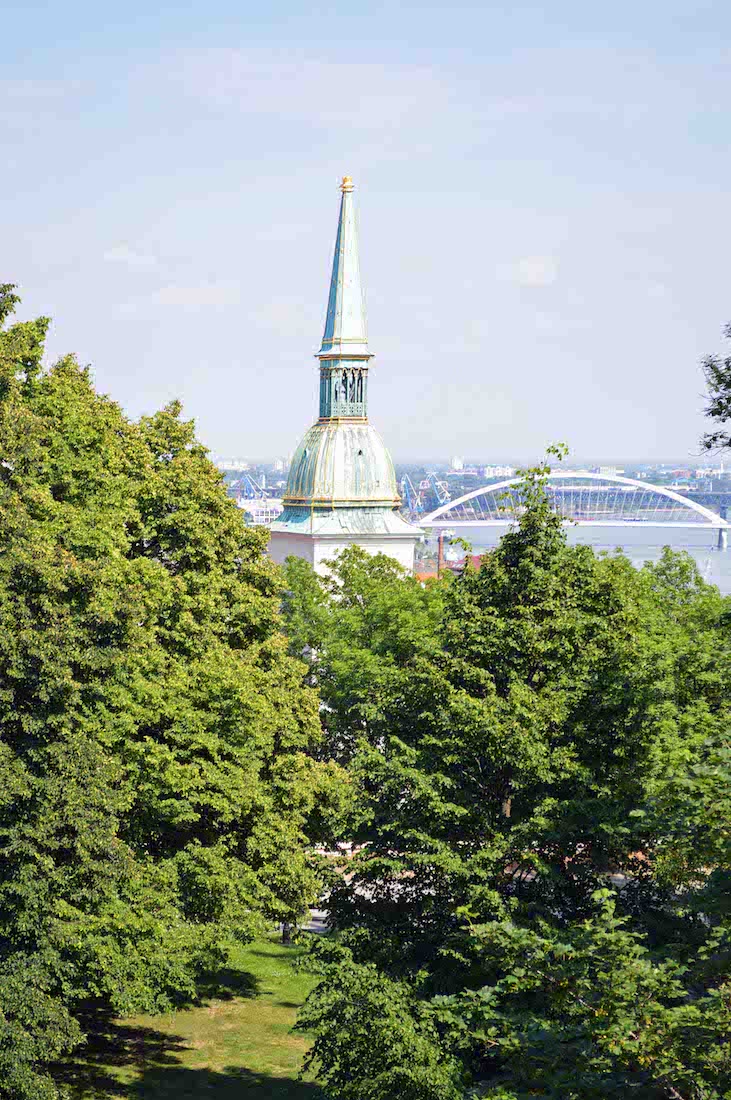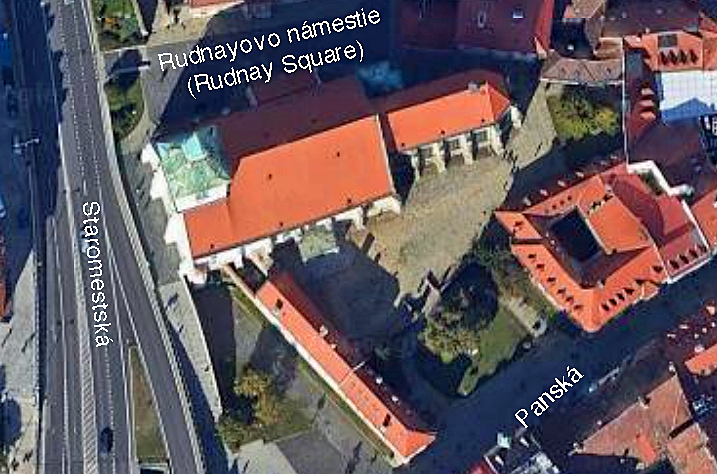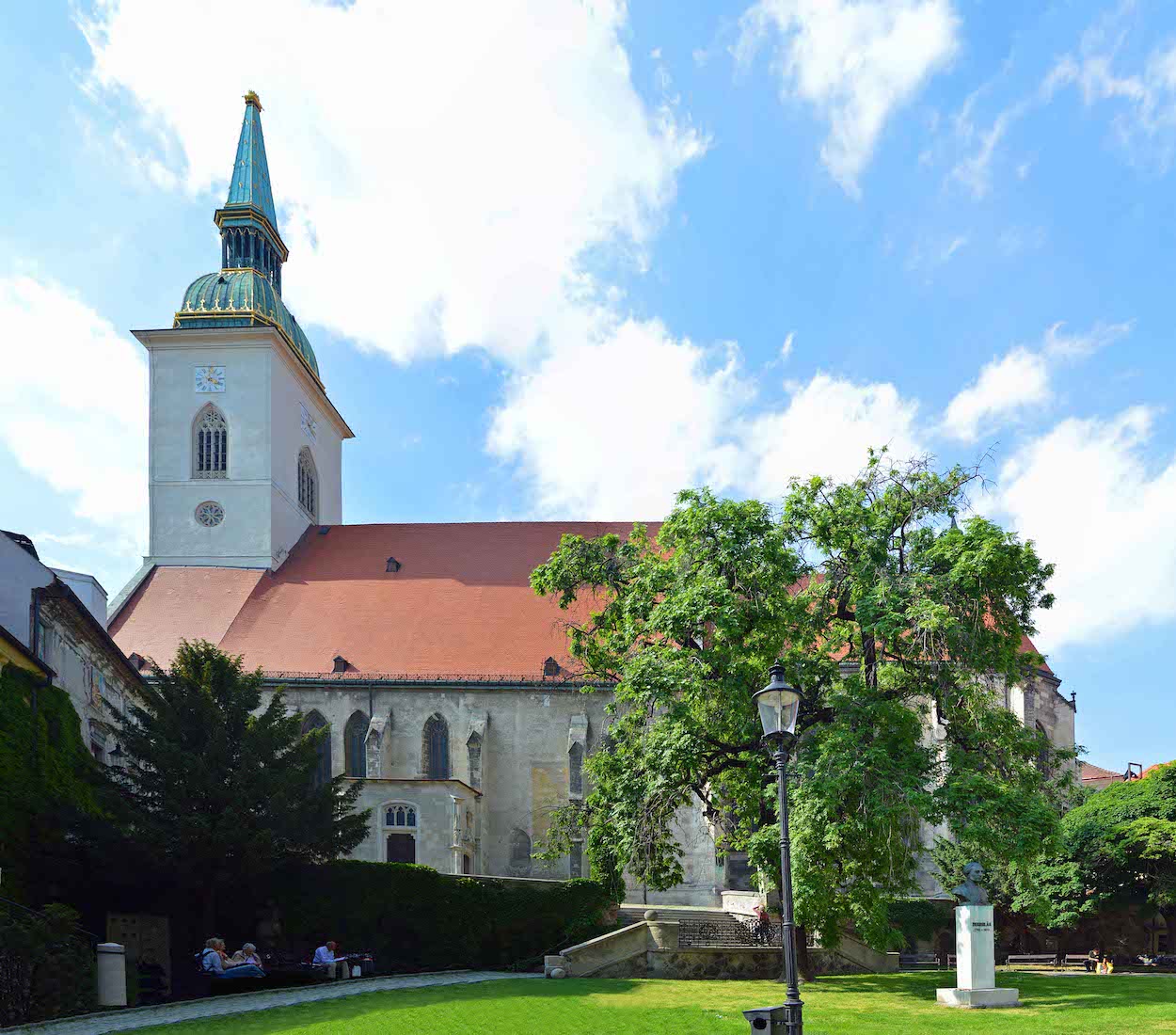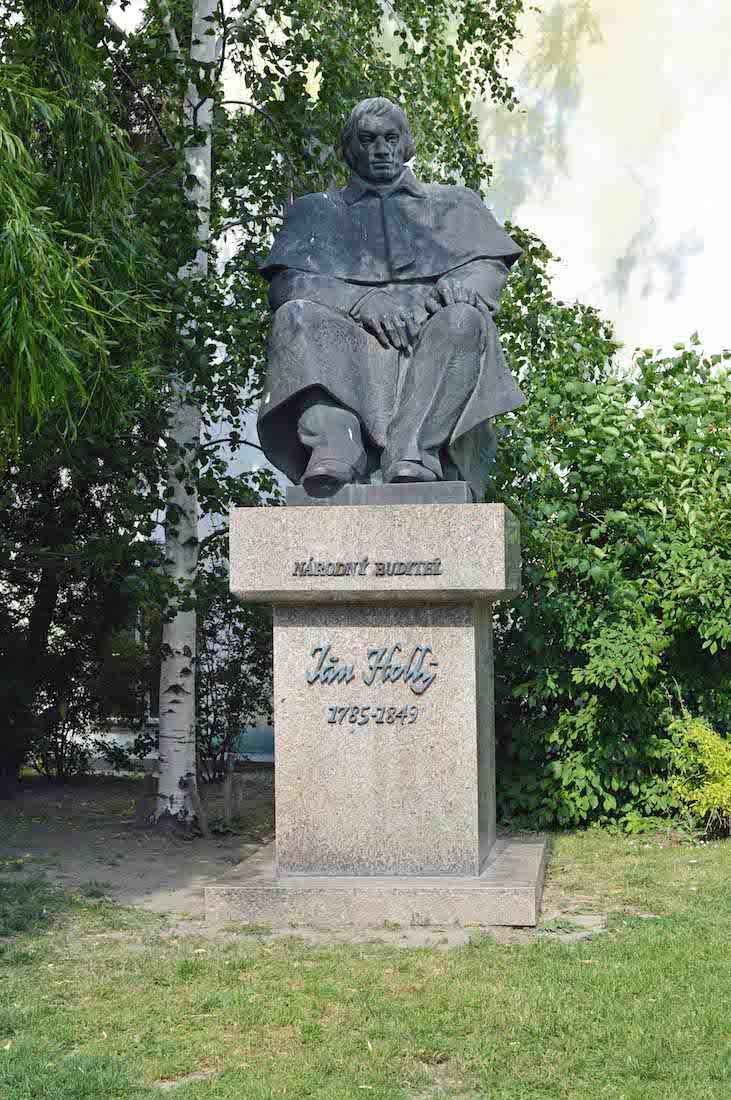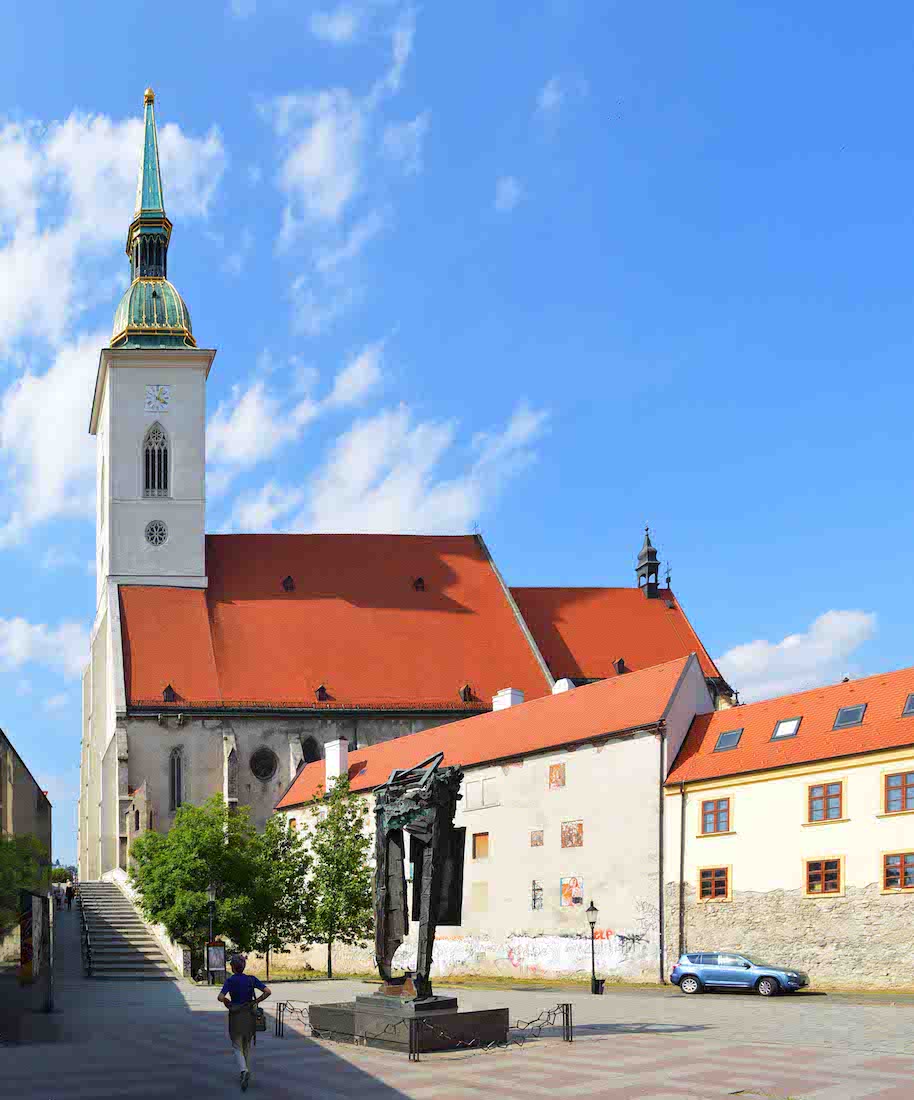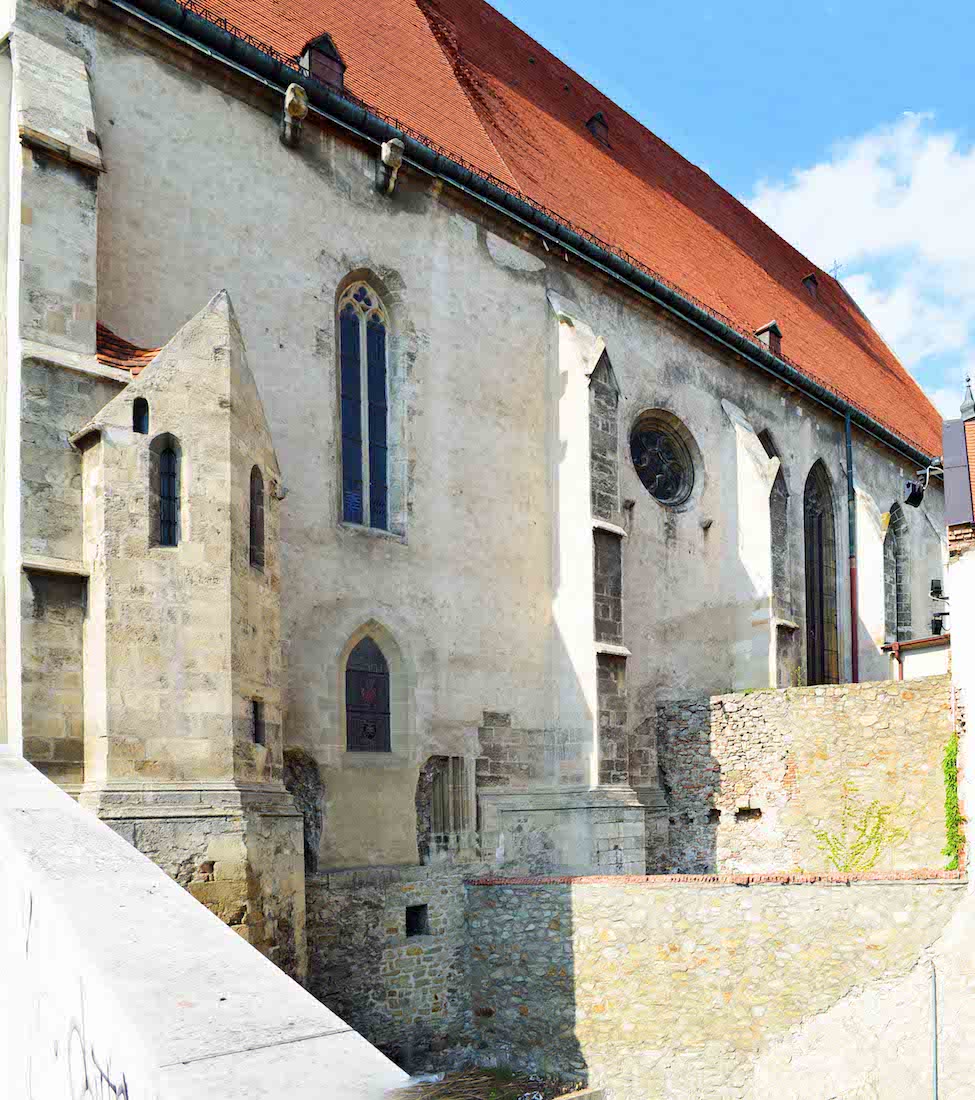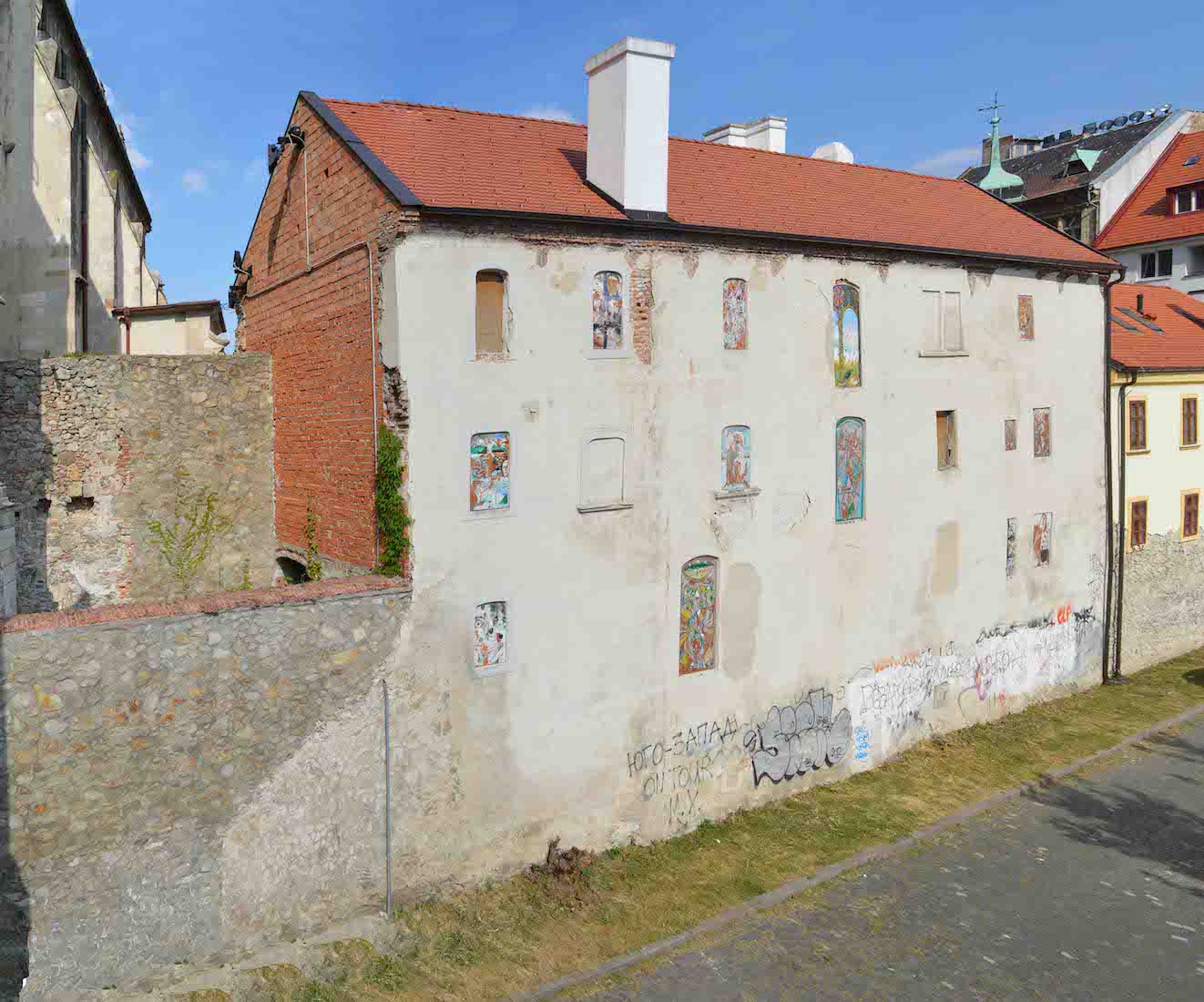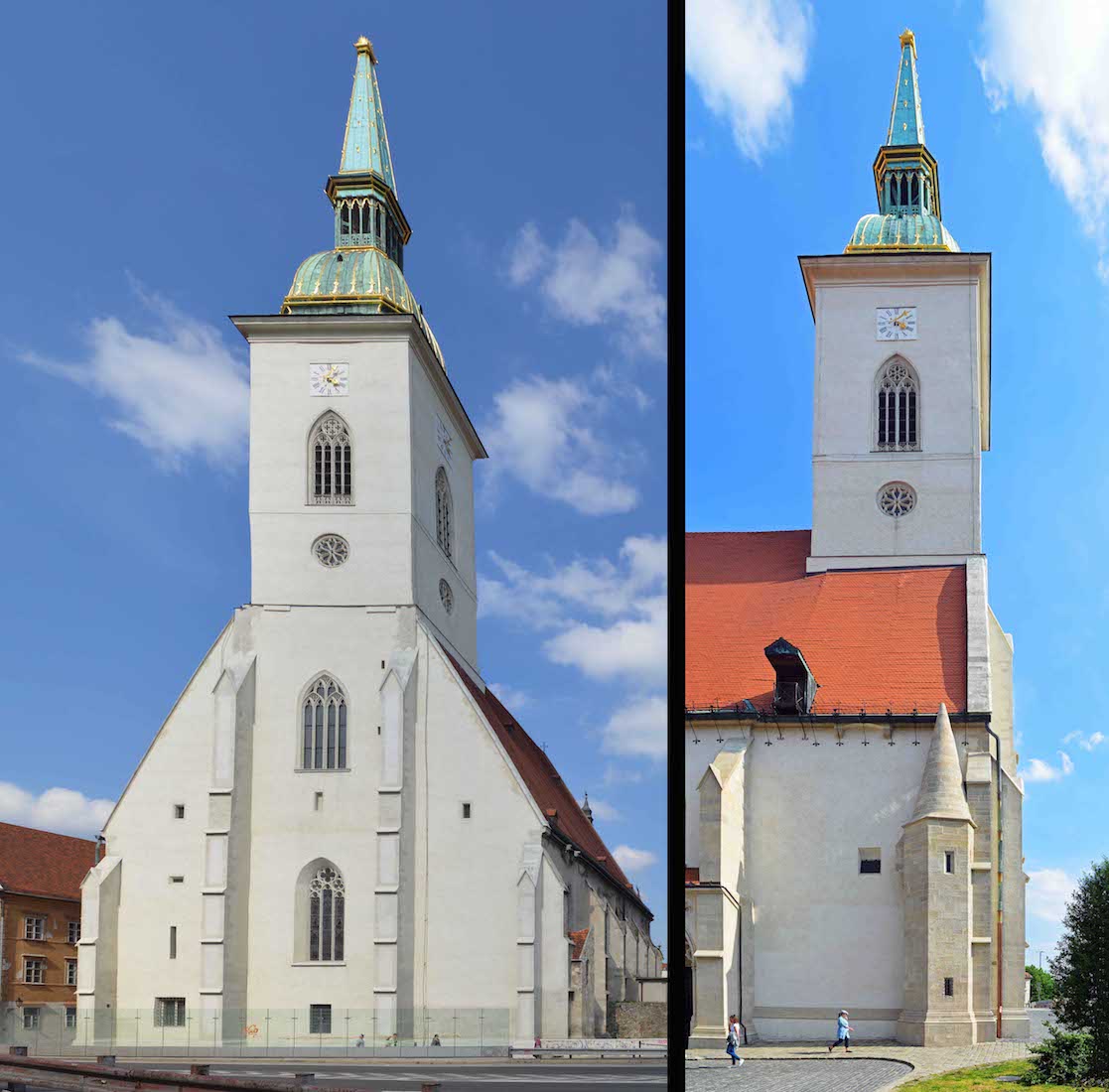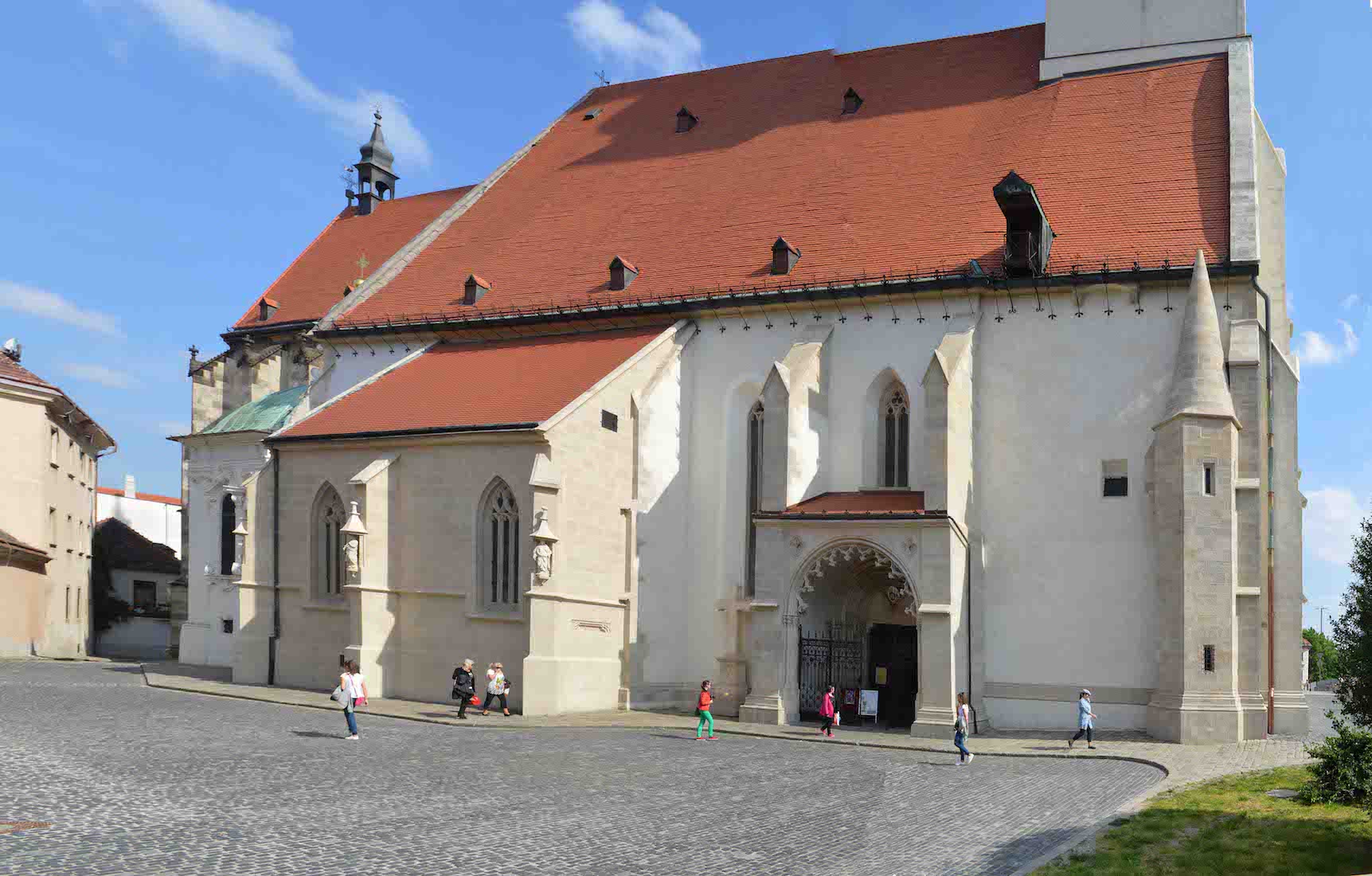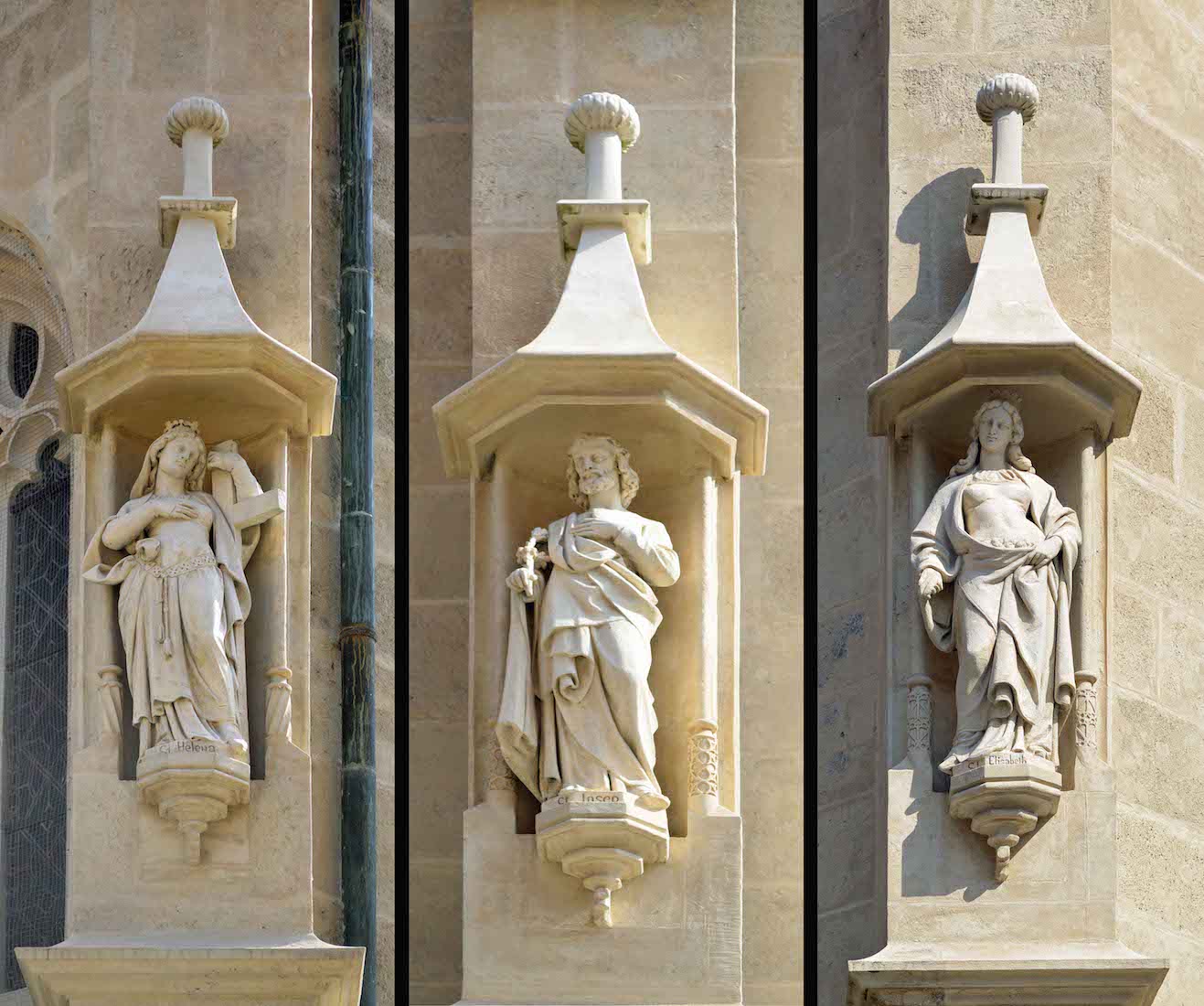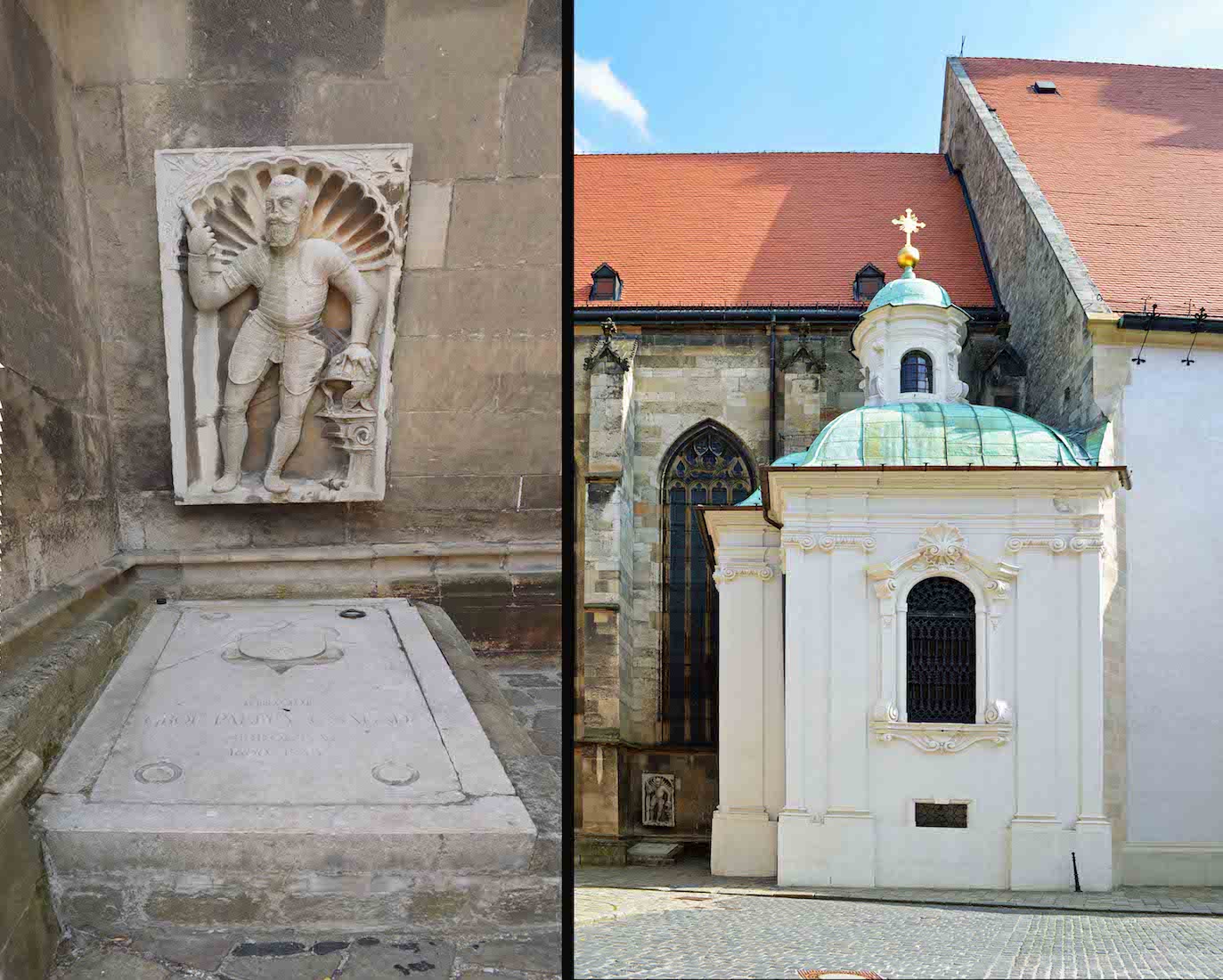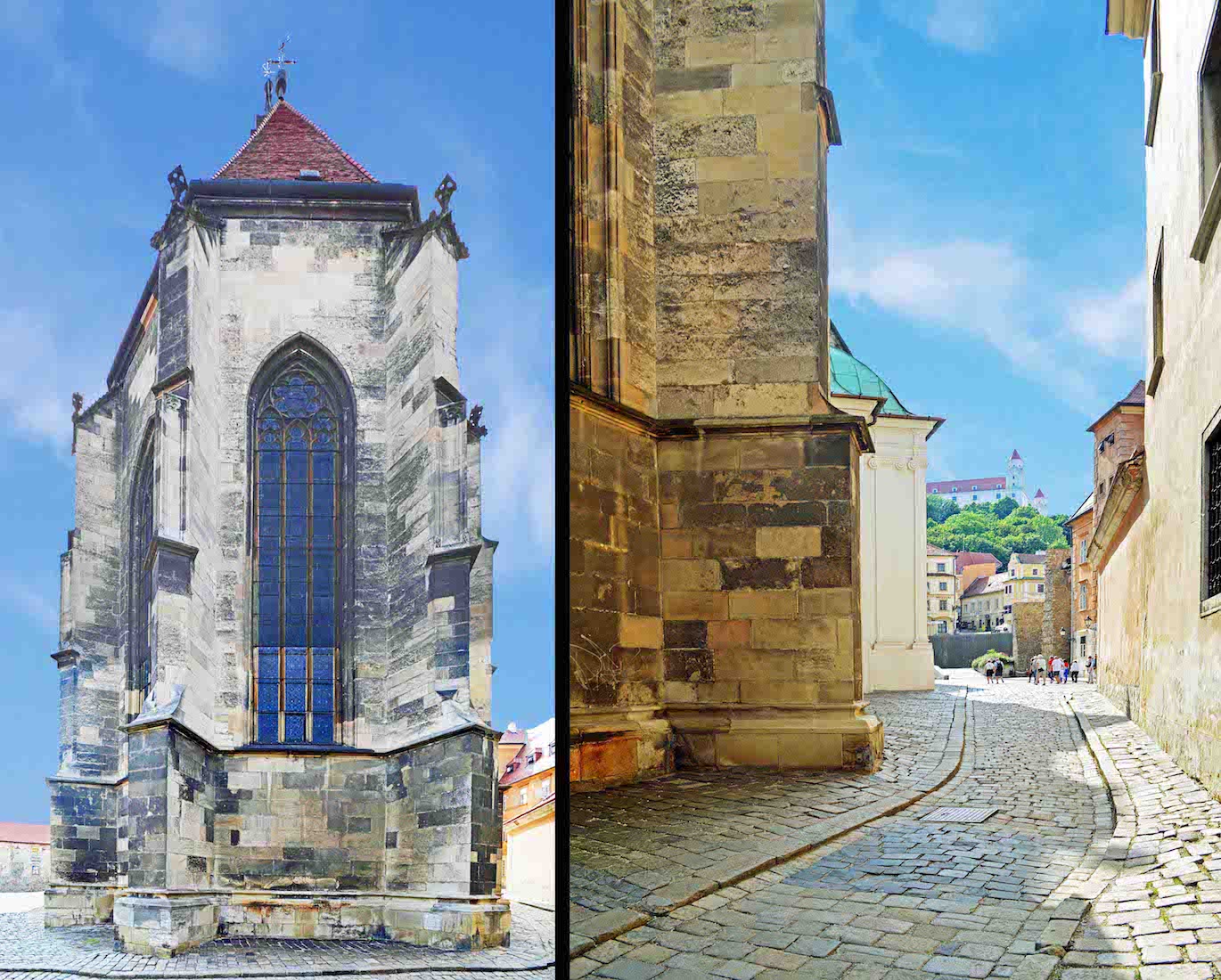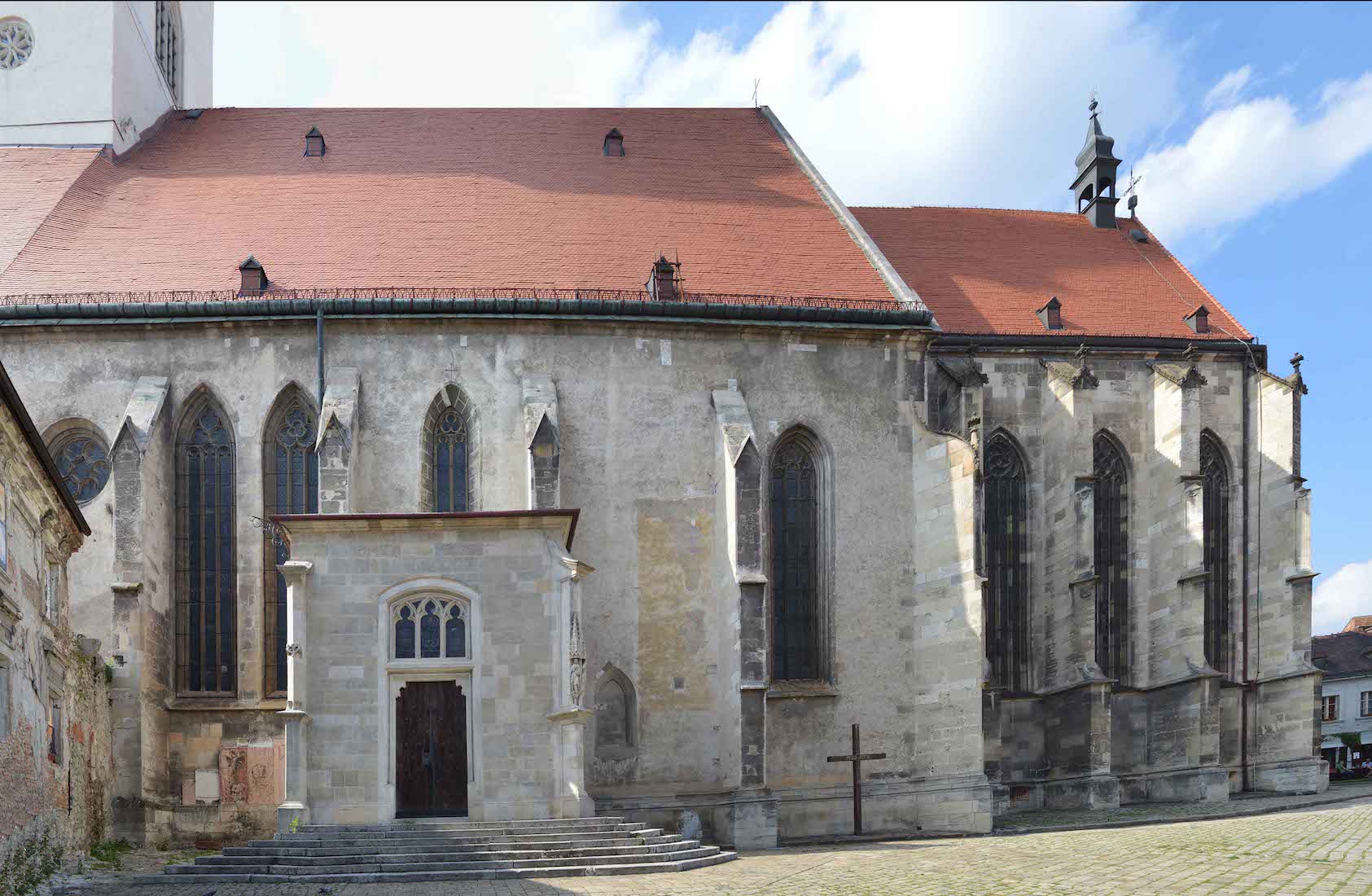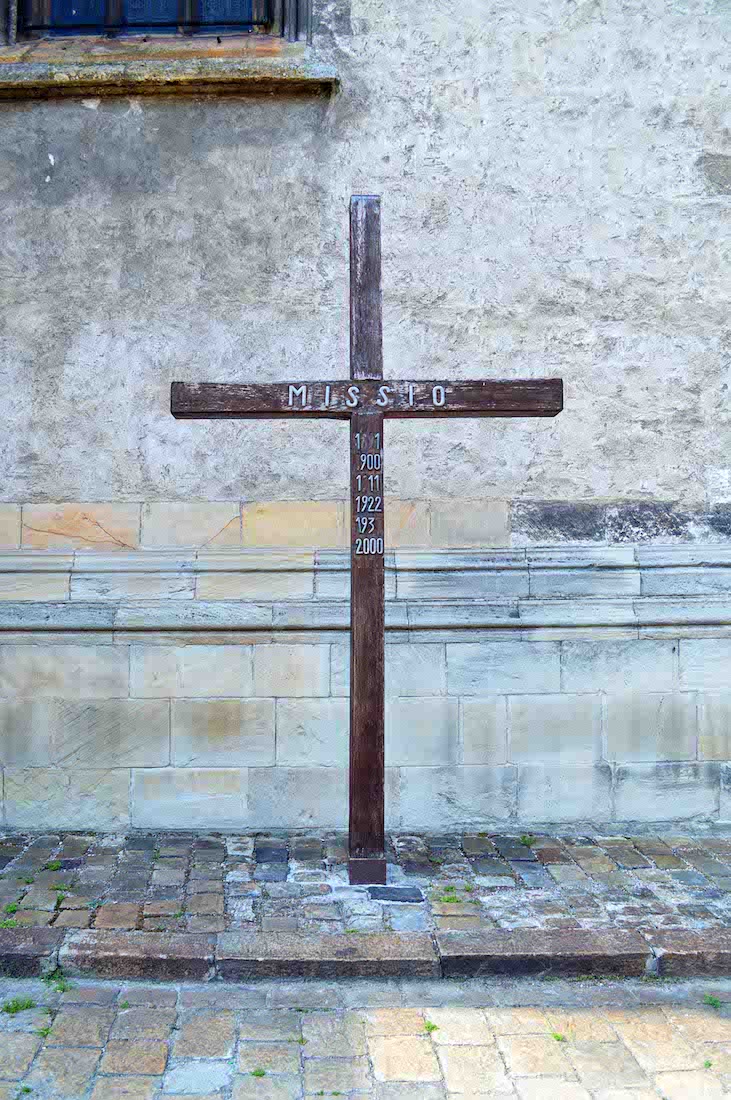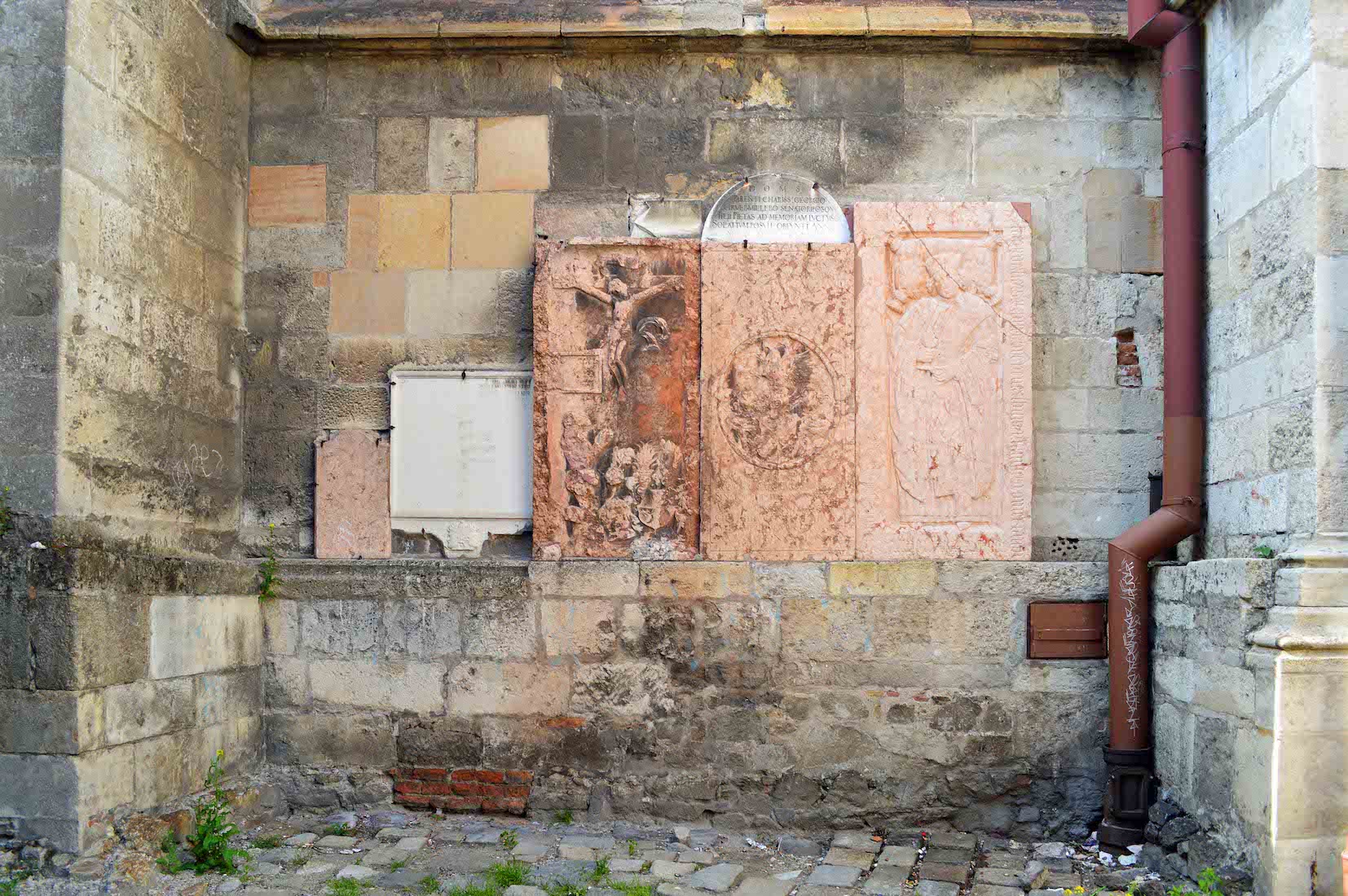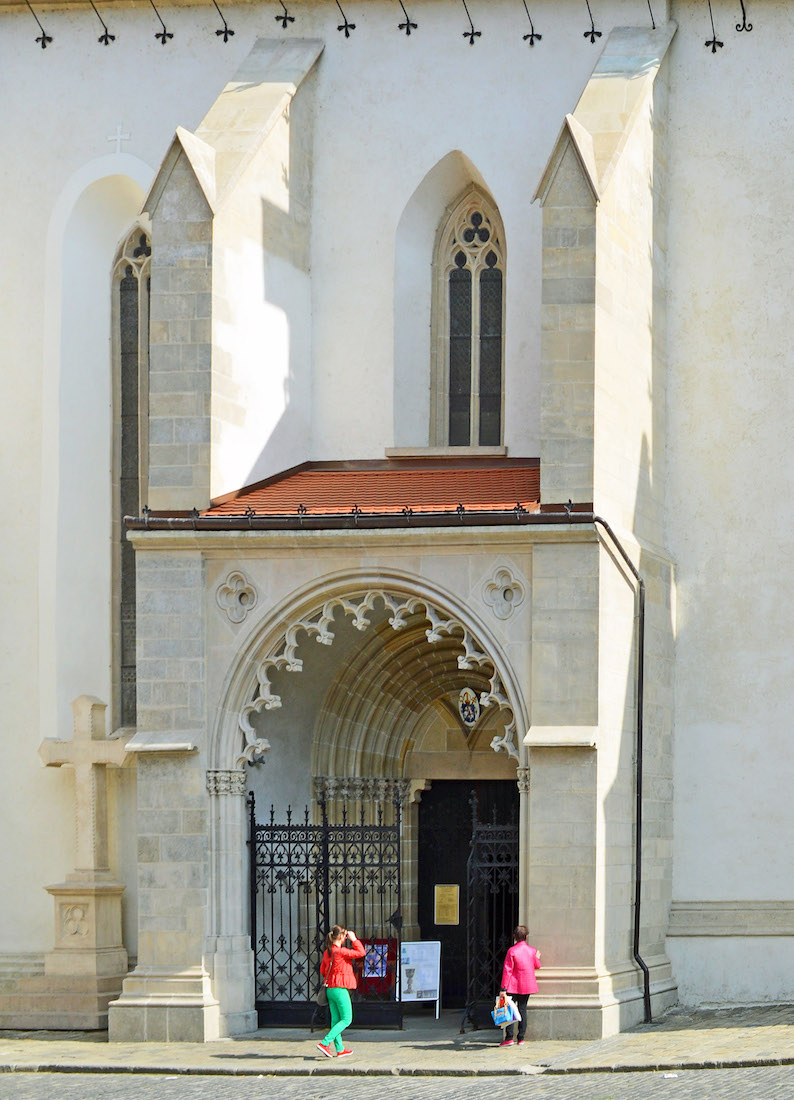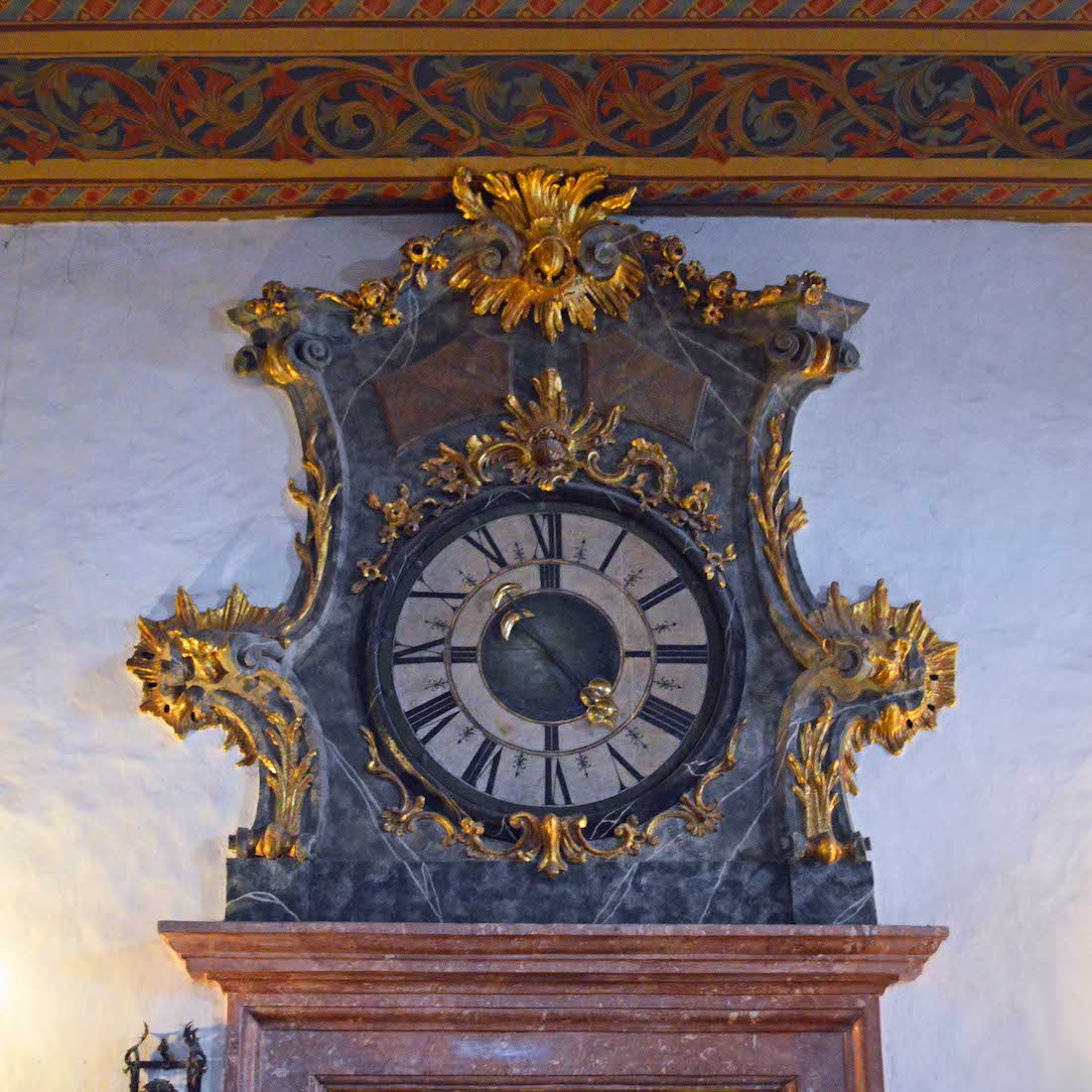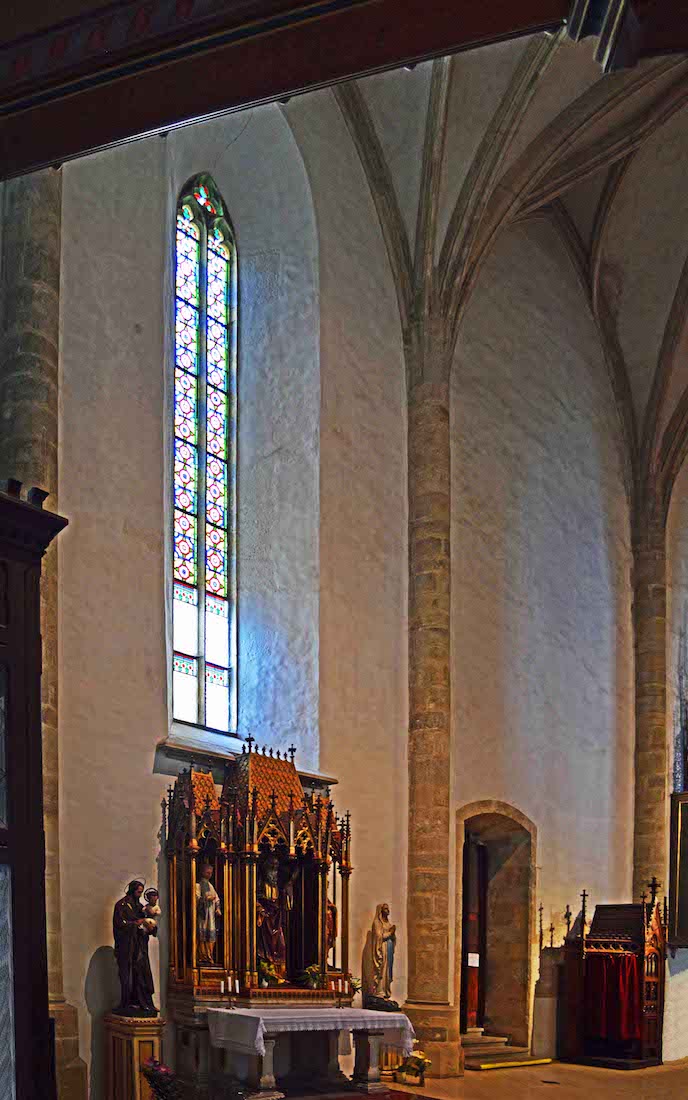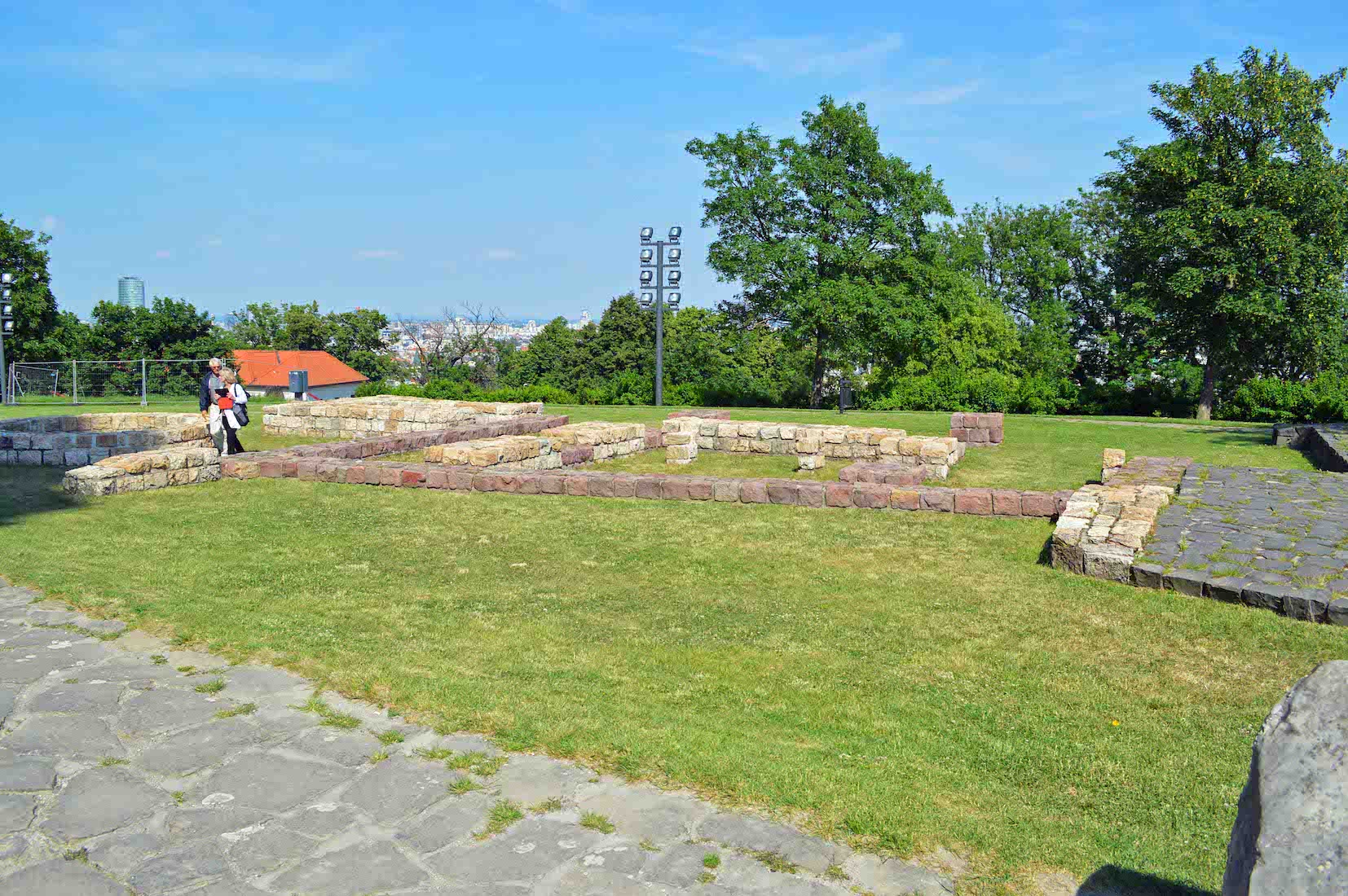
Visitors to Bratislava, Slovakia, are likely to begin their visit at the great Castle set high above the city. To the east of the castle building are the remains of the Great Moravian basilica (9th century), the Church of St Savior (11th century) and other early medieval objects which are indicated on the ground. INDEX
2. OUTLINE PLAN
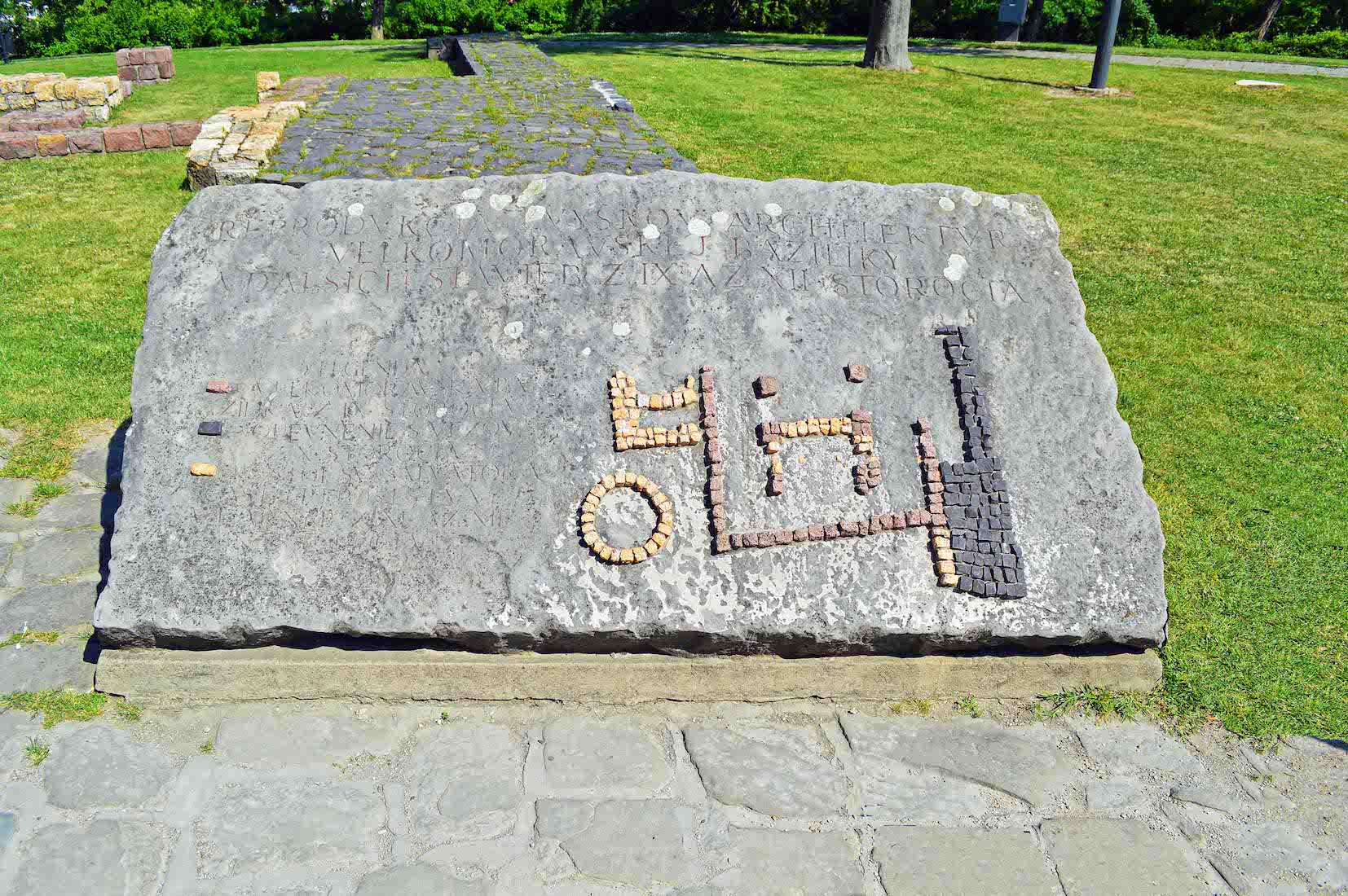
Near the ruins is a large stone with the plan shown in relief. Bratislava Castle had a stone two-story palace and a spacious three-nave basilica, built in the mid-9th century. Excavations of the cemetery situated by the basilica brought findings of the Great Moravian jewelry, similar in style and quality to that from Mikulčice.
3. GLIMPSE OF ST MARTIN’S
Looking out from the site of the basilica, we catch our first glimpse of St Martin’s Cathedral. It is the largest and one of the oldest churches in Bratislava, known especially for being the coronation church of the Kingdom of Hungary between 1563 and 1830. Notice the gold Hungarian crown on a cushion at the tip of the spire.
4. SATELLITE VIEW
This view shows the axis of the Cathedral to be almost due East – West, with the tower at the Western end, a large nave, and a smaller chancel to the East, ending in a rounded apse. The elongated Chapel of St Anne sits to the North of the nave, with the square domed Chapel of St John nearby, and there is an entry portico to the South of the nave.
5. FIRST APPROACH
From the city there is a pleasant approach to the Cathedral through a park to the South. A bust sits on a pedestal in the park. A church was originally built on this site in Romanesque style and sanctified to the Holy Savior in 1221. As the town grew into a city and received additional privileges in 1291, the sanctuary became insufficient for its needs. Construction of a new Gothic cathedral began in 1311 on the site of the earlier church and an adjacent cemetery.
6. JÁN HOLL´Y
Ján Hollý was a Slovak poet and translator. He was the first greater Slovak poet to write exclusively in the newly standardised literary Slovak language. His predecessors mostly wrote in various regional versions of Czech, Slovakized Czech or Latin. Hollý translated Virgil's Aeneid and wrote his own epic poetry in alexandrine verse to show that the Slovak language recently standardised by Anton Bernolák was capable of expressing complex poetic forms.
7. VIEW FROM SOUTH
We walk around the Cathedral in a clockwise direction. To our left, a busy motorway cuts very closely past the West wall. In the foreground is a Holocaust Memorial, which stands on the site of the Neolog synagogue, destroyed during the Soviet period to make way for road-widening. The memorial was constructed in 1996, and includes a metal piece and a shiny black granite ‘wall’ with an engraving of the synagogue.
8. SOUTH WALL, WEST
Old cathedrals always conceal mysteries – it is part of their fascination! Perhaps the fortification at left (and its twin on the North wall) was once a confessional? Or was it actually a fortification, long ago?
9. ADJACENT BUILDINGS
These old and somewhat neglected buildings were part of the cathedral complex in the past. Construction of the Cathedral continued until final completion in 1452. The Cathedral attained its present-day appearance during the period 1869 to 1877, when it was re-Gothicised after suffering damage by fire, war, earthquake and other disasters.
10. TOWER
The tower is 87 metres high. It was damaged by fires in 1760 and 1833 caused by lightning. The current state of the tower is from the years 1835-1849, when builder Ignatius Feigler designed the small spire as a decorative cushion with the Hungarian gilded crown weighing 300 kg. Below the clock face is the bell tower. The oldest and largest bell is Wederin, weighing 2,513 kg, cast by Baltazár Herold in 1675. On the occasion of the year 2000 Great Jubilee, five new bells were given by neighbouring countries. .
11. NORTH WALL
From the North we see the main entry. To the left is the St Anne Chapel, then a space, and the Gothic Chapel of St John the Almoner. The total internal dimensions of the Cathedral are: length: 69.37 m; width: 22.85 m; thickness of nave walls: 1.5 m.
12. THREE SAINTS
These three saints adorn the St Anne Chapel. From left they are St Helena, St Joseph (identifiable by his sprig of lilies), and St Elisabeth of Hungary. Saint Helena (c. 250 – c. 330) was the consort of the Roman emperor Constantius Chlorus and the mother of the emperor Constantine the Great. She is an important figure in the history of Christianity due to her major influence on her son and her own contributions in placing Christianity at the heart of Western Civilization.
13. GRAVE AND CHAPEL
The grave and relief are of the Palffy family – a famous aristocratic family of Hungary. The ancient family name comes from ‘son of Paul’. Next to it is the Chapel of St John the Almoner, abutting the East wall of the nave.
14. EASTERN APSE
We continue our walk around the Cathedral. Looking back past the Chapel of St John the Almoner, we see Bratislava Castle in the distance up on the hill. We then arrive at the narrow apse of the Cathedral – the sanctuary.
15. SOUTH WALL
We have returned to our starting point of the South wall, albeit rather closer – the park is behind us. Things to notice, from right: the three (in fact four) windows of the South chancel, a wooden cross, the long windows of the nave and the round window, and a group of headstones alongside the South portal.
16. MISSIO CROSS
Missio is the Pope’s official charity for overseas mission. It shares the hope of the Gospel where there is turmoil, poverty and uncertainty in the world, and where the Church is new, young or poor. Missio empowers local people to form and sustain communities of faith and trains future leaders so that the vital work of the Church in the world can take place.
17. HEADSTONES
Just left of the South portal stands a group of very old headstones. The central large stone appears to belong to Chariss and Georgio Gruebmiller(o), but I can find no reference to them. We shall comment on other South wall features when we are inside the Cathedral.
19. OLD CLOCK
My first photograph inside St Martin’s is of this old Baroque clock. It is definitely in the Cathedral, is covered with cobwebs, and (for me) has absolutely no context! Where is it? Shall we see it again?
20. THE NORTH NAVE
Let us begin our exploration of St Martin’s. At our extreme left is the entry door. Below the window is a small altar with a saint on either side. To the right of this is a door with a small white sign attached. And beyond that is a confessional.


